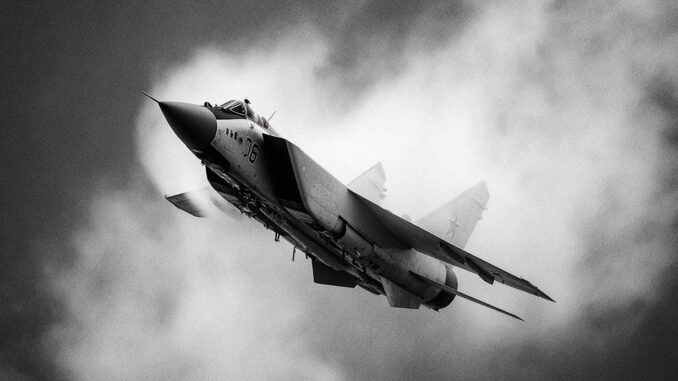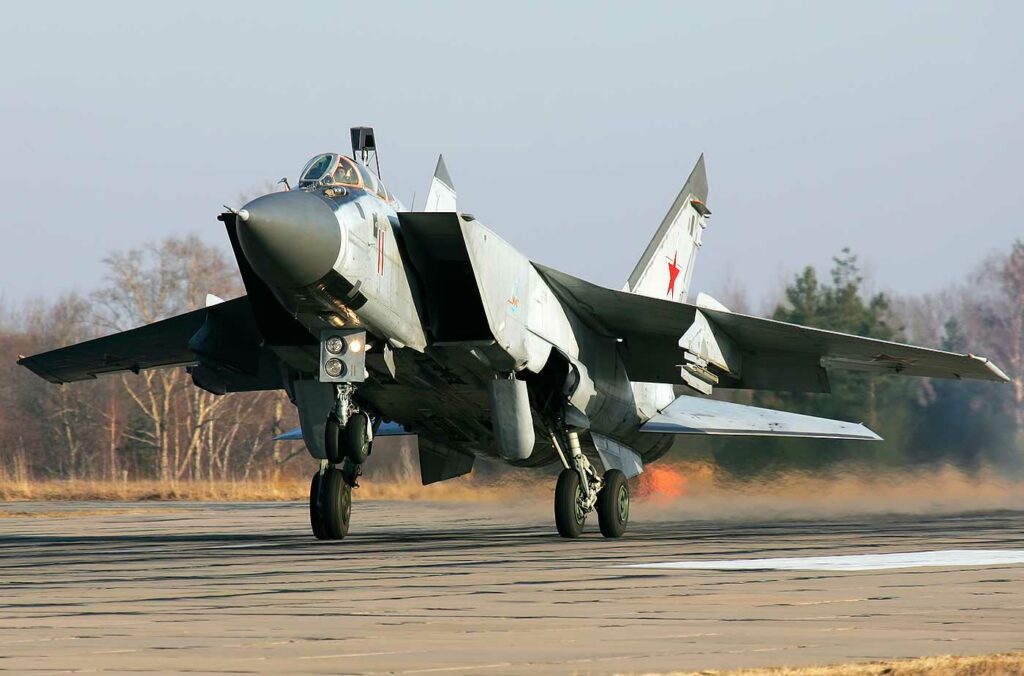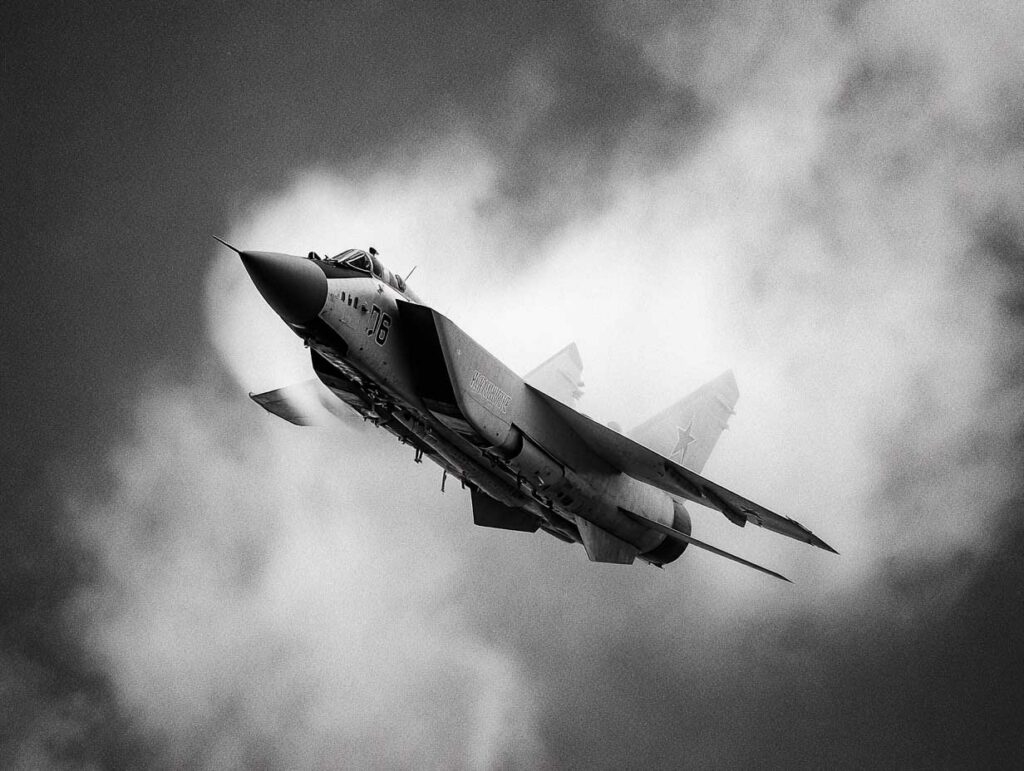
Used as a carrier for Kinzhal missiles, the MiG-31 is the last Russian aircraft still active against Ukrainian air defenses.
The MiG-31, formerly a Soviet supersonic interceptor, remains one of the few Russian fighter jets operating in the war in Ukraine. Initially designed to counter high-altitude Western strategic bombers, this 1980s aircraft has seen its role evolve into a long-range attack mission. It has been adapted to fire the Kh-47M2 Kinzhal air-launched ballistic missile, which is described as hypersonic. However, the unexpected success of Ukrainian defenses, particularly with Patriot batteries, has reduced the operational effectiveness of this weapon. This context highlights Russia’s dependence on aging platforms and underscores the limitations of so-called “uninterceptable” systems in the face of modern, adapted, and responsive defenses.

An aging Russian fleet under industrial and tactical pressure
Russia has approximately 3,600 military aircraft, most of which are no longer in production or fully operational. The Russian defense industry is primarily focused on supporting ground troops, which limits its capabilities for aircraft maintenance and modernization. The imposition of Western technology sanctions since 2022 has led to a shortage of imported components (sensors, semiconductors, turbines) and hampered the maintenance of complex platforms.
In this context, Russian tactics have shifted. The use of tactical fighter jets such as the Su-30SM, Su-35S, and MiG-29 has become marginal near the Ukrainian front. These aircraft are limited to patrols behind the front lines or even air-to-ground missile strikes beyond radar range.
Ukraine’s deep air superiority, achieved through its radars, IRST systems, and F-16 and Mirage 2000 interceptors, has made the combat zone inaccessible to Russian aircraft. Since mid-2023, Russian fighters have rarely operated beyond Russian borders, while Ukrainian forces have even used modified Su-24s and MiG-29s to fire Western missiles.
This new tactical situation is forcing Moscow to rely on distant platforms: airborne cruise missiles, long-range drones, and strategic bombers. In this context, the MiG-31 is one of the few surviving platforms.
An interceptor converted into an airborne ballistic vector
The MiG-31 Foxhound, which entered service in 1981, is derived from the MiG-25 and designed to intercept high-altitude, high-speed targets. It has a maximum speed of 2.83 Mach, a ceiling altitude of 20,600 meters, and a radar tracking capacity of 10 simultaneous targets (Zaslon-M).
It has been adapted to carry the Kh-47M2 Kinzhal missile, which is described as hypersonic, but whose actual observed speed is less than Mach 6, compared to the Mach 10 announced. The missile weighs approximately 4,300 kg and has a range of 2,000 to 2,500 kilometers, depending on flight profiles.
The Russian strategy has been to use the MiG-31 to fire the Kinzhal at high speed from Russian airspace. The objective is to strike command posts, logistics sites, or anti-aircraft batteries behind the front lines. However, since 2023, Ukrainian Patriot PAC-3 systems have begun to intercept these missiles on a regular basis.
Ukrainian operators exploited the MiG-31’s radar traceability and the Kinzhal’s altitude data to optimize their interception windows. In reality, the missile follows a predictable quasi-ballistic trajectory, allowing for early firing from mobile and distributed radars.
By losing the Kinzhal’s supposed operational advantage, the MiG-31 also loses its primary mission. It is no longer used as an interceptor, and its role in the current war is reduced to a declining operational experiment.

A fleet doomed by wear and tear and tactical inefficiency
Between 1981 and 1994, 519 MiG-31s were produced. Most have been withdrawn from active service or stored. Today, fewer than 150 aircraft are believed to still be operational, a significant proportion of which are only partially operational.
The estimated airframe life of 2,500 flight hours for non-modernized models is insufficient to extend their use without major overhaul. However, Russian factories are overwhelmed by the production of shells, drones, ground-to-ground missiles, and the maintenance of other aircraft such as the Su-34.
Russia exported 50 MiG-31s to Kazakhstan, which withdrew them from service in 2023. One or two aircraft are believed to have been acquired by the United States for radar evaluation purposes. This information, passed on to Ukraine, has helped improve detection and interception strategies.
The future of the MiG-31 in the Russian armed forces is limited to either costly modernization of a few aircraft (MiG-31BM) or replacement by the Su-57, which is still a long way from entering large-scale service.
The consequences are clear: Russia is struggling to maintain a long-range, high-tech air capability. The MiG-31 is a fighter jet that has reached the end of its life, used for lack of anything better, and whose relevance is being called into question by the reality of the Ukrainian battlefield.
War Wings Daily is an independant magazine.